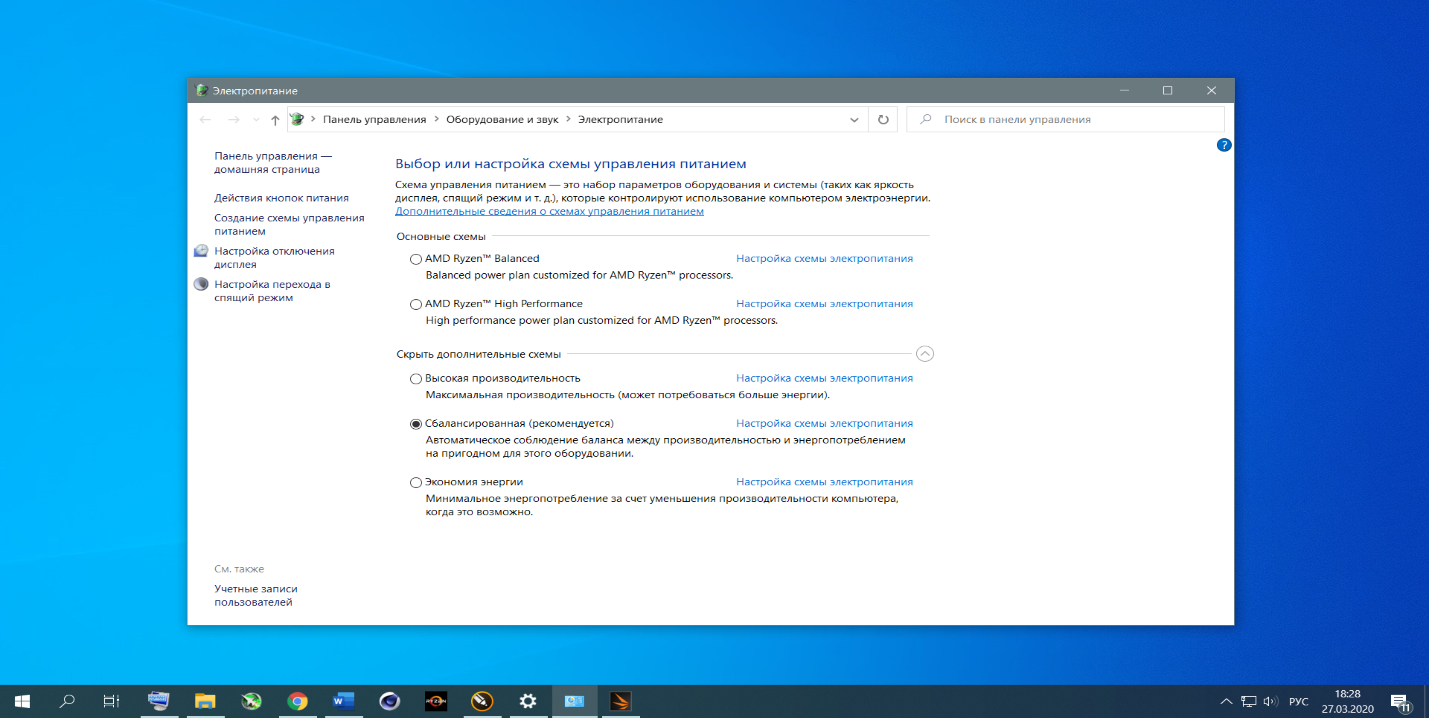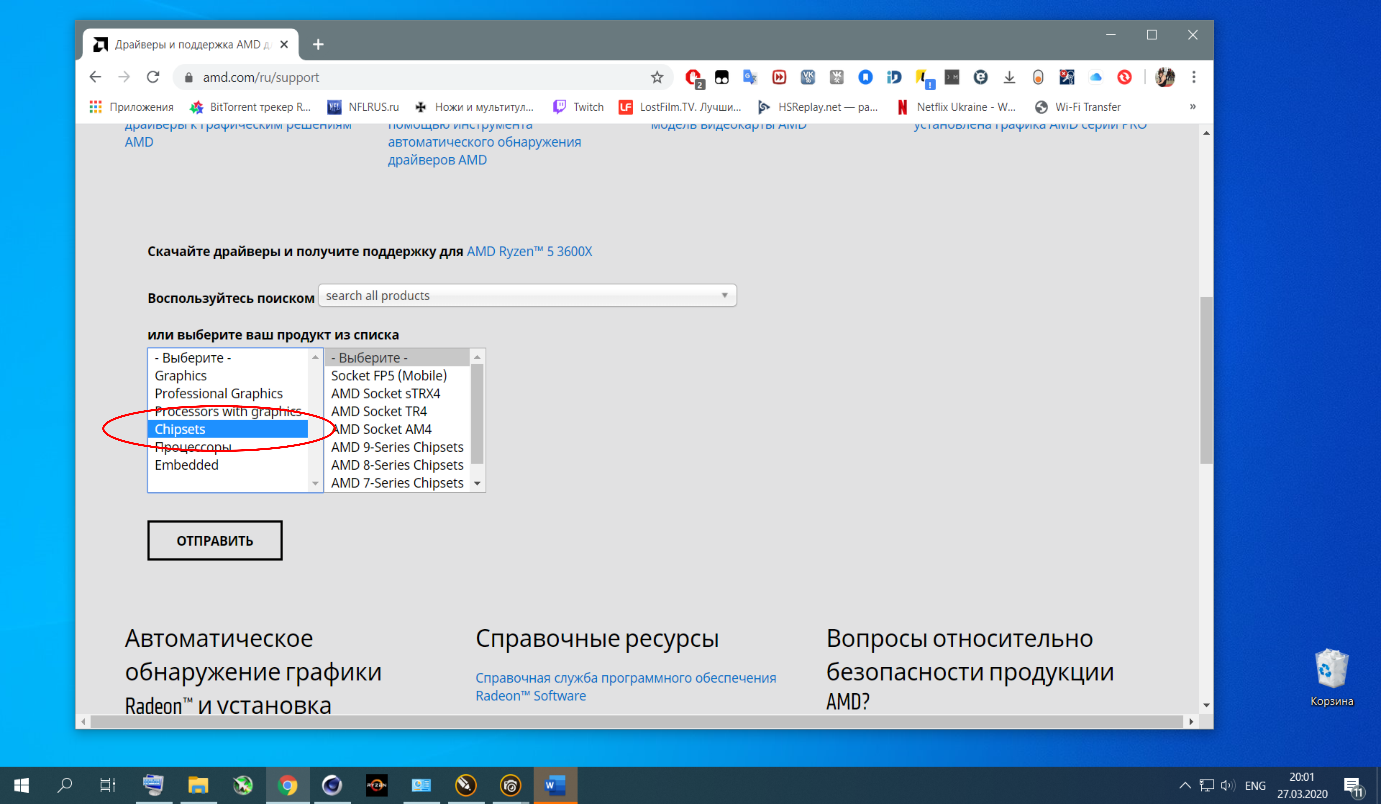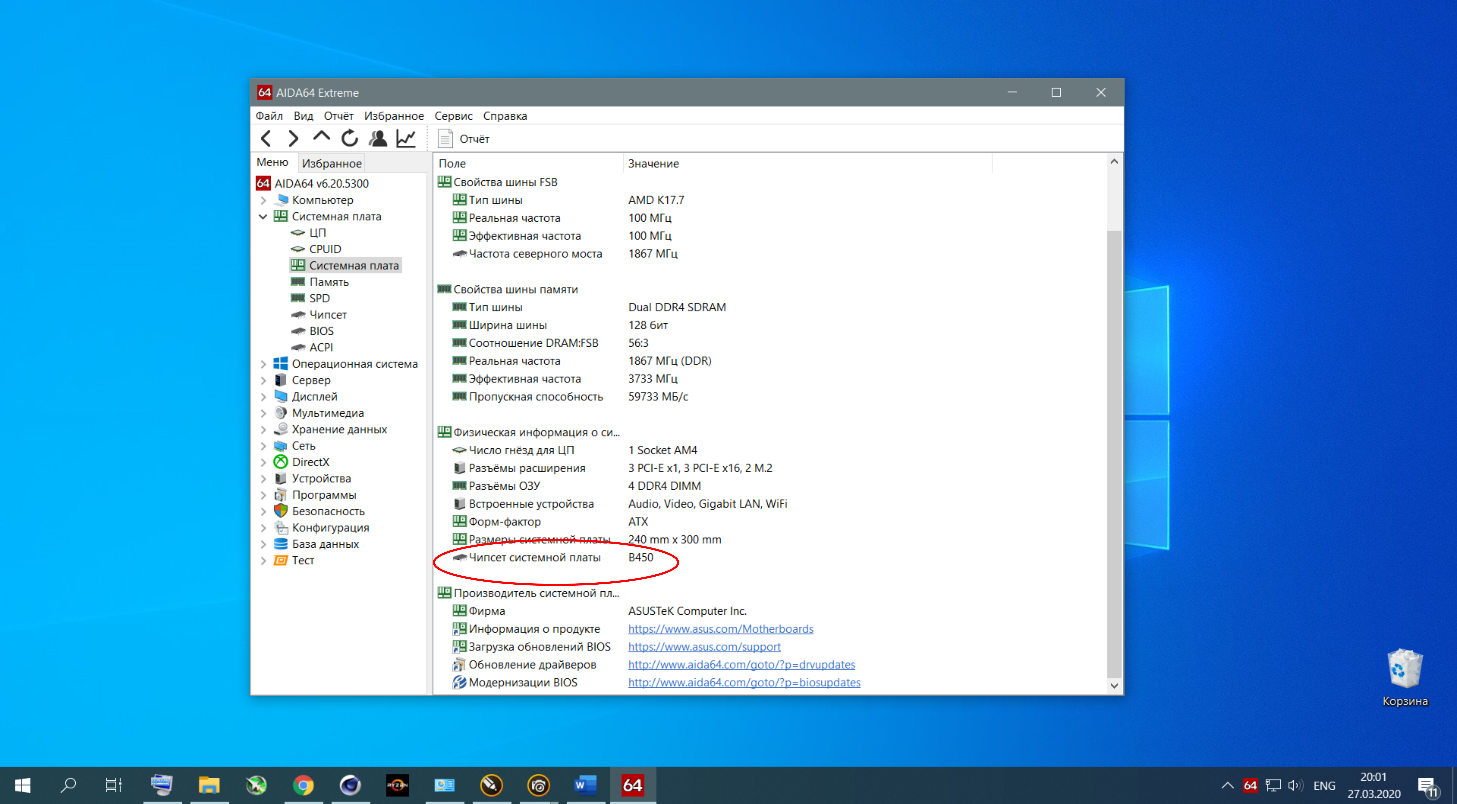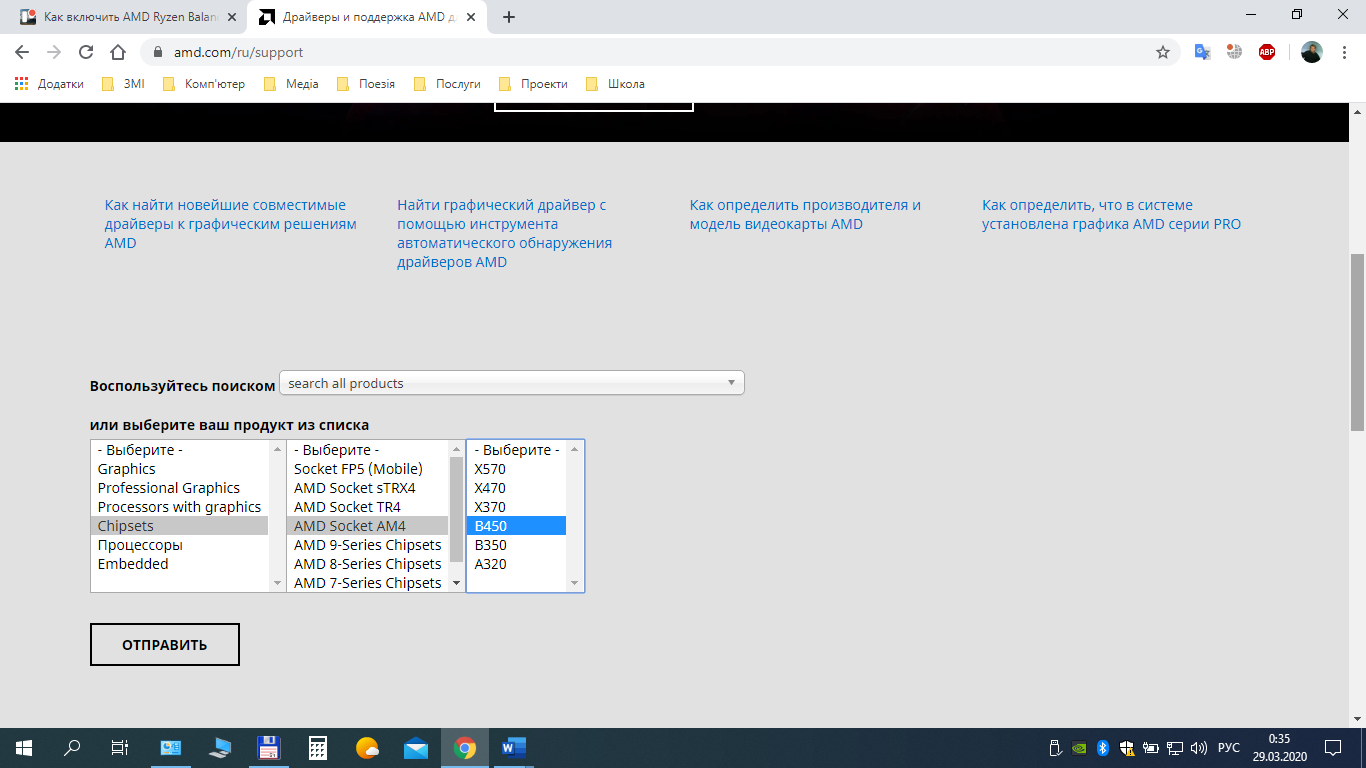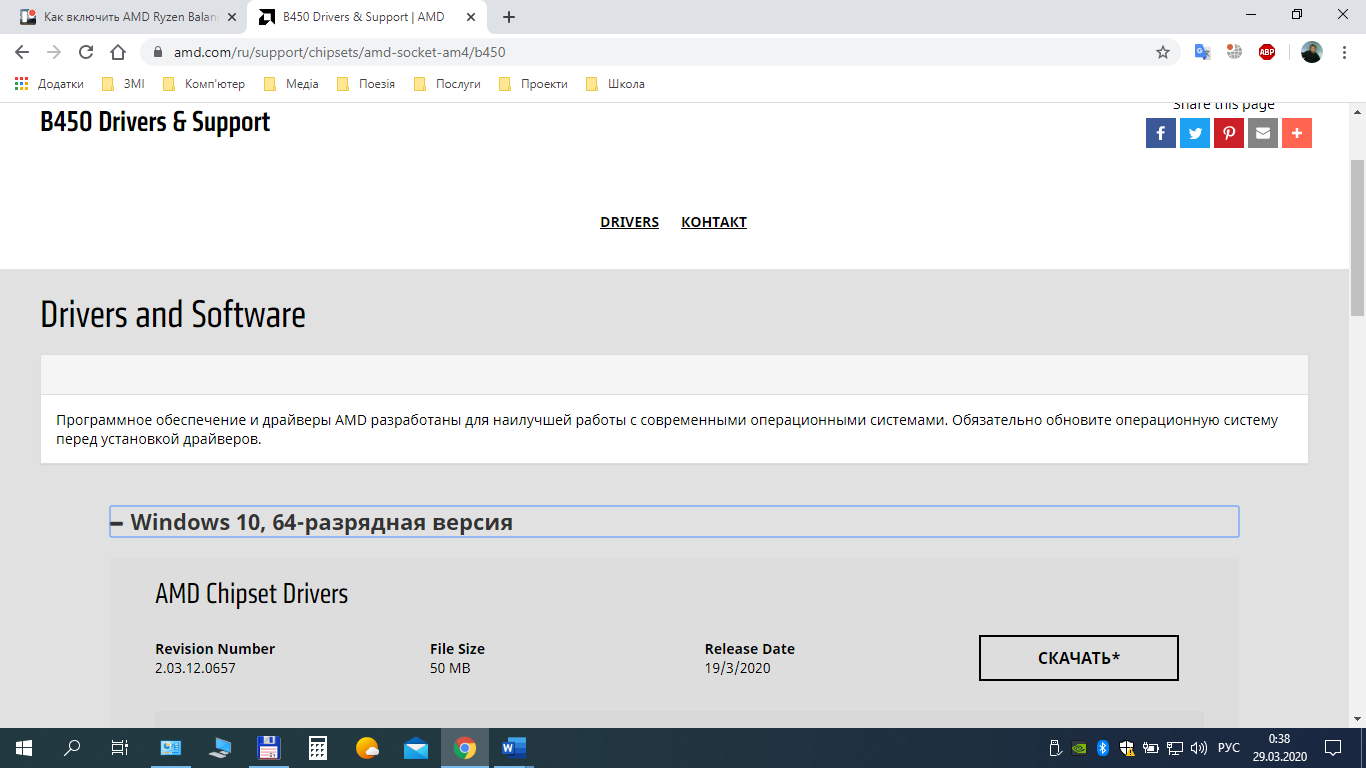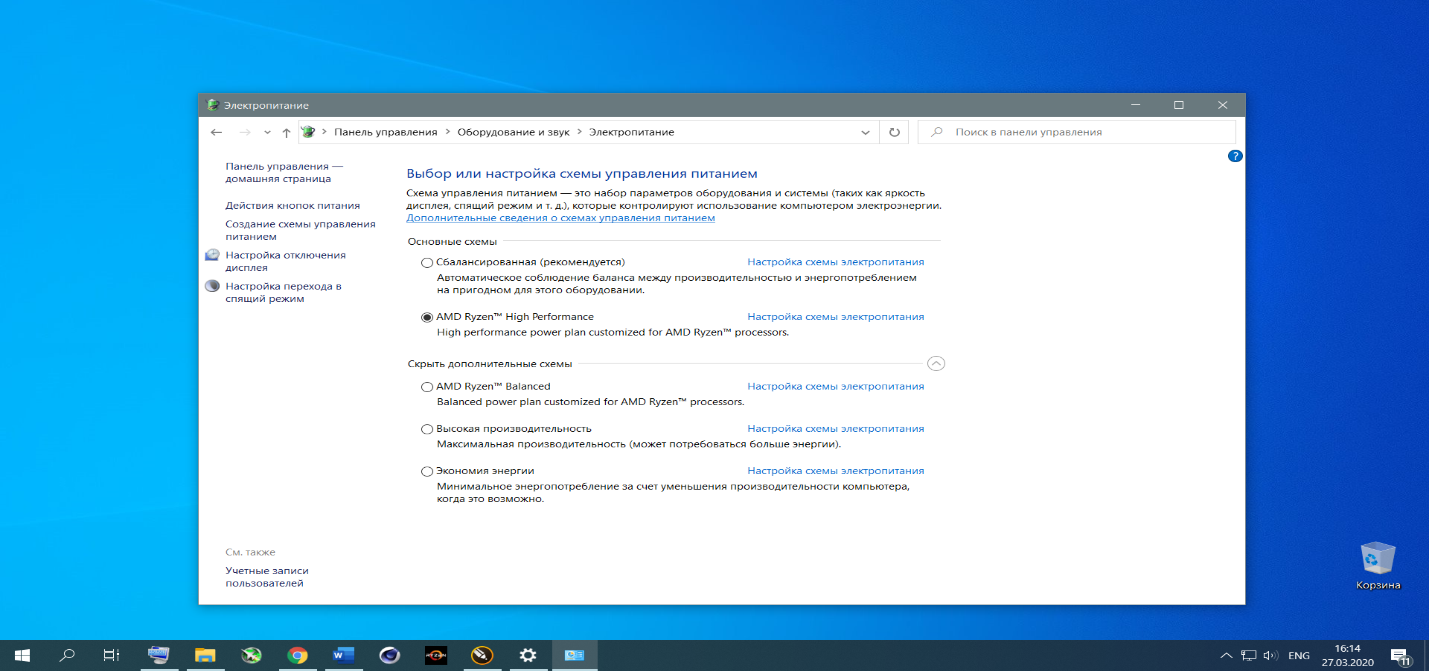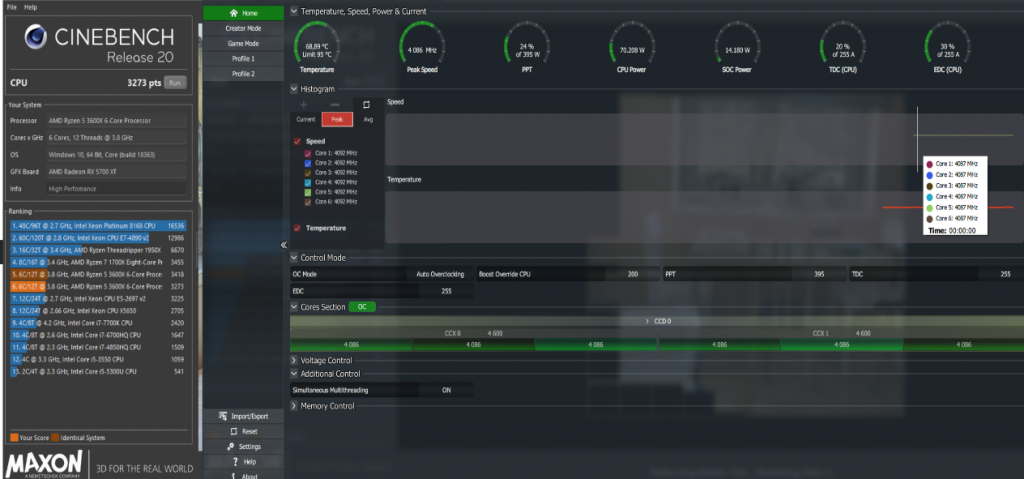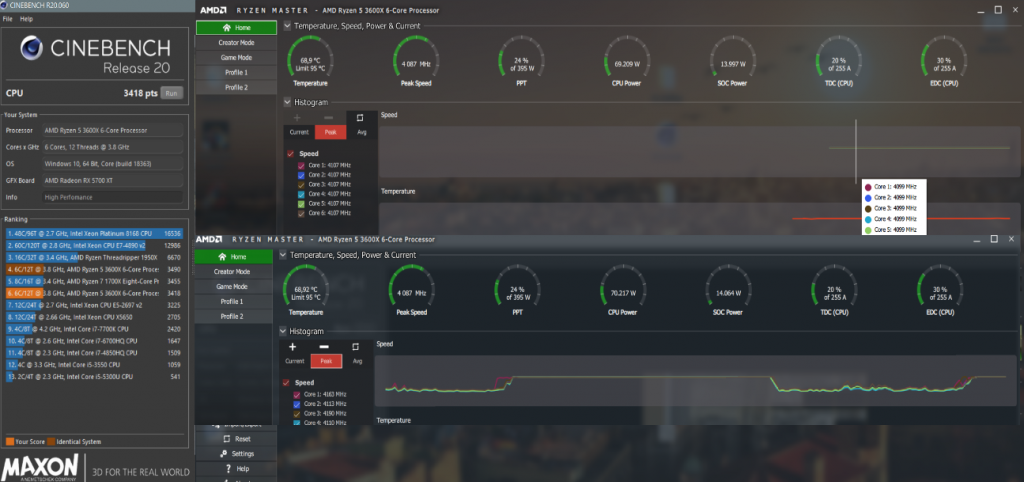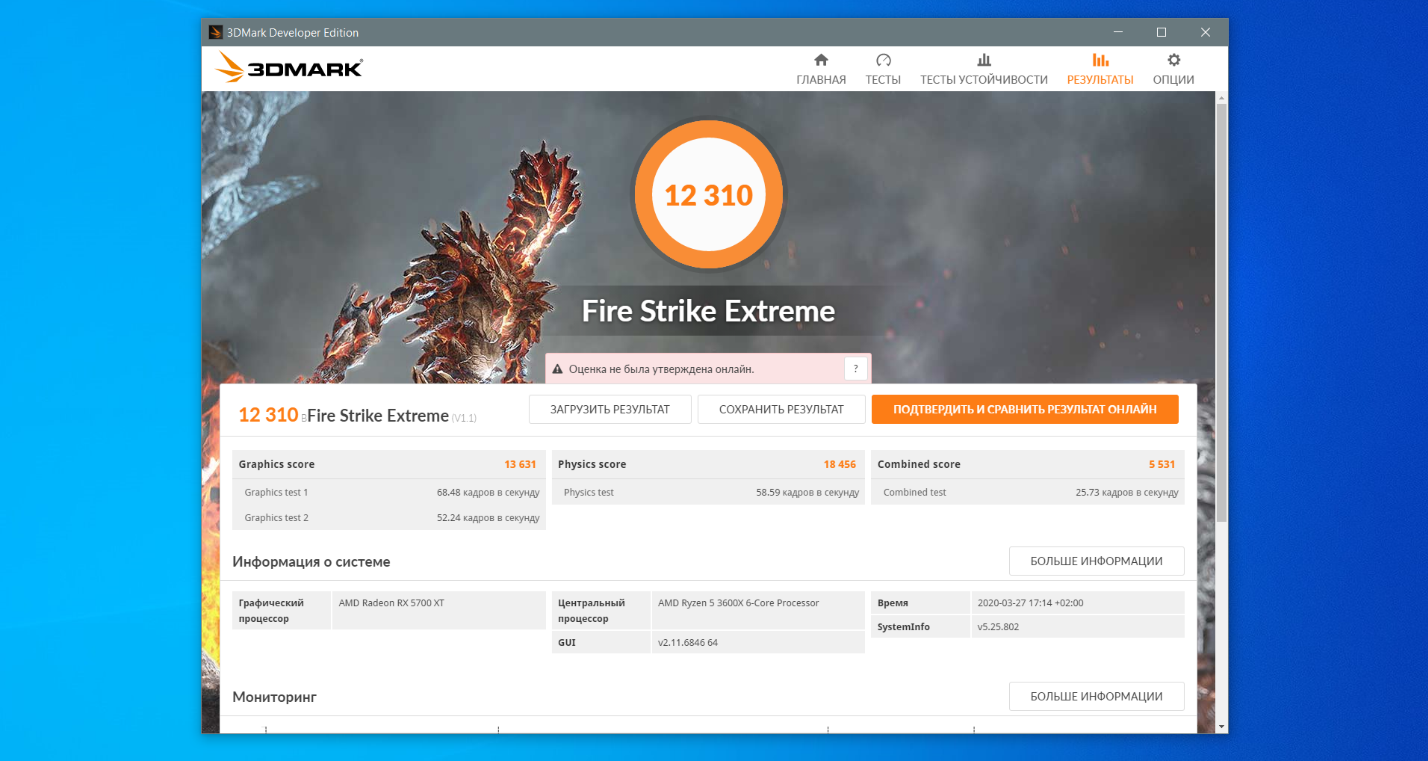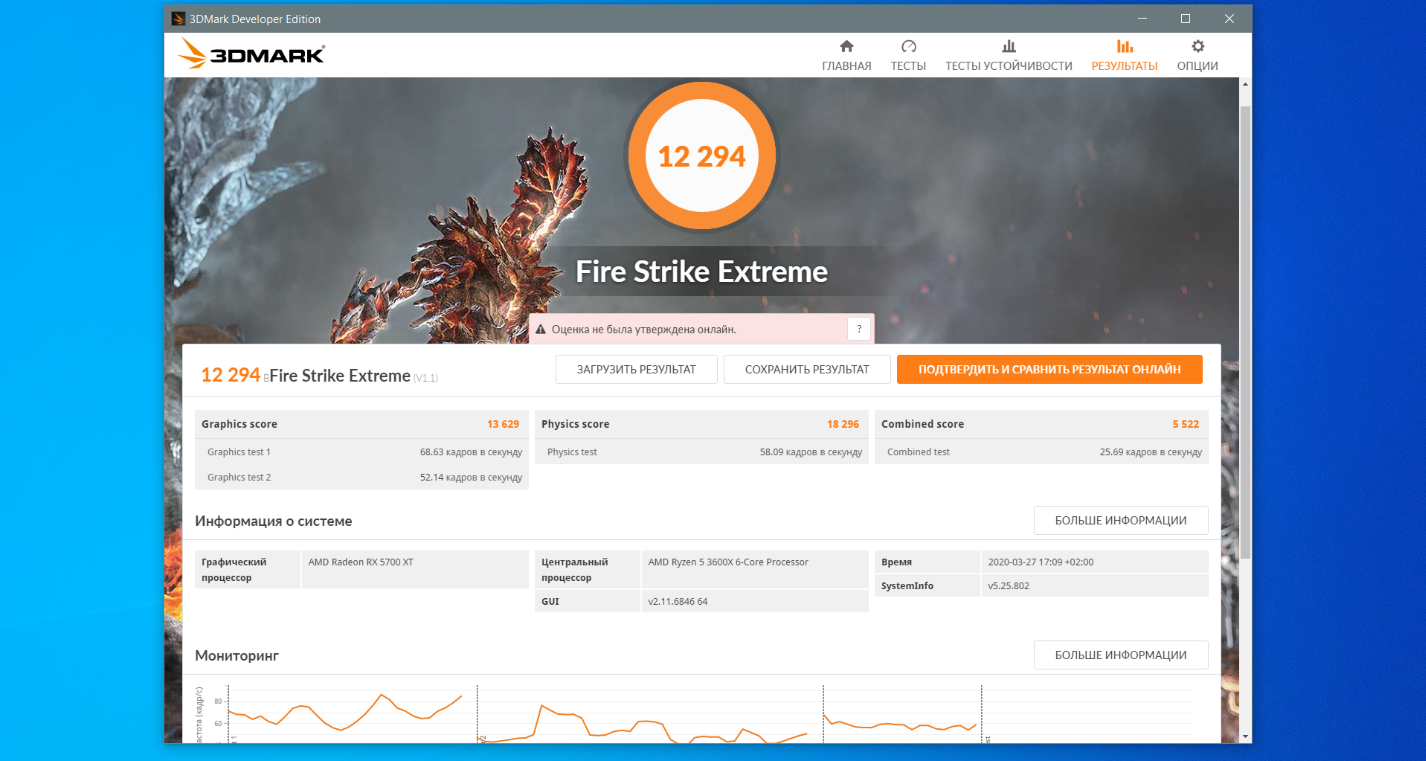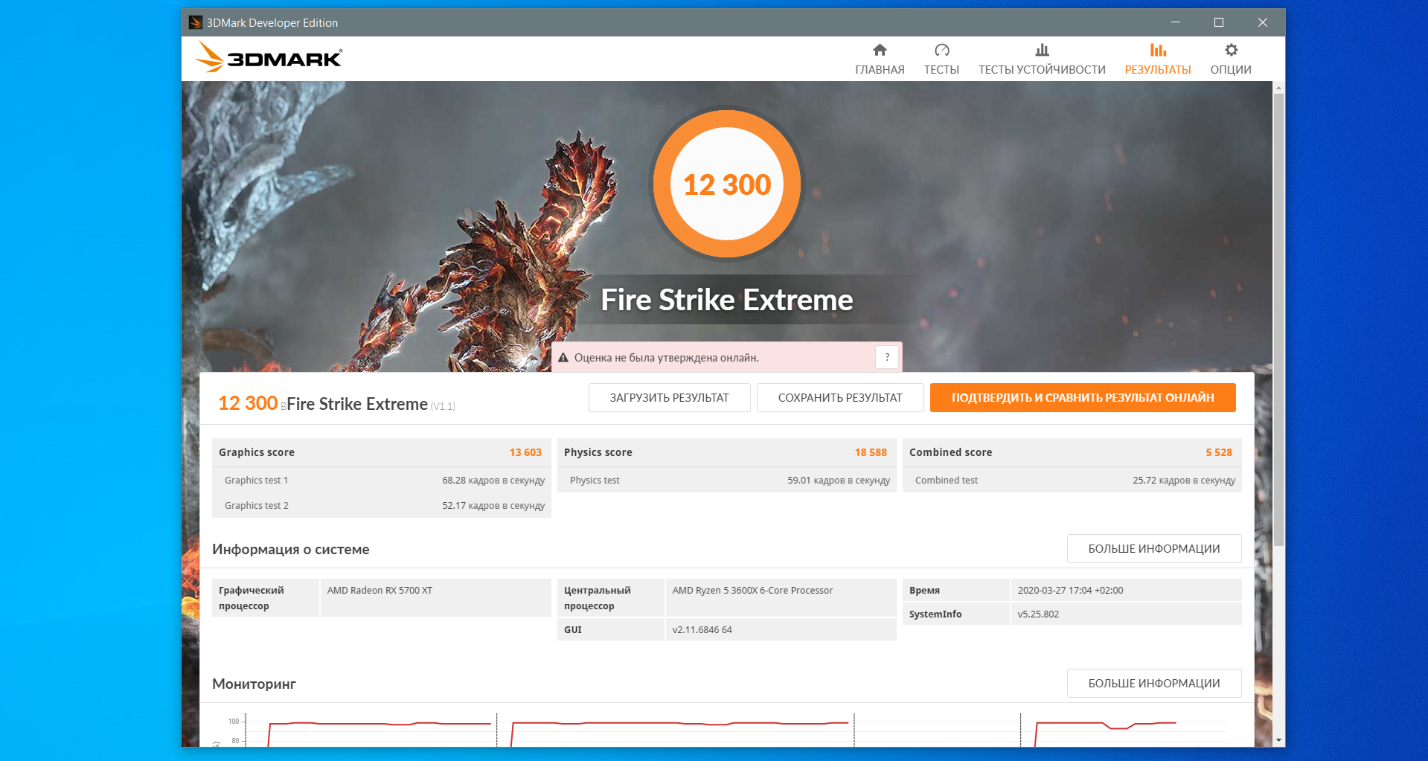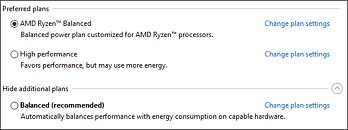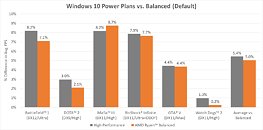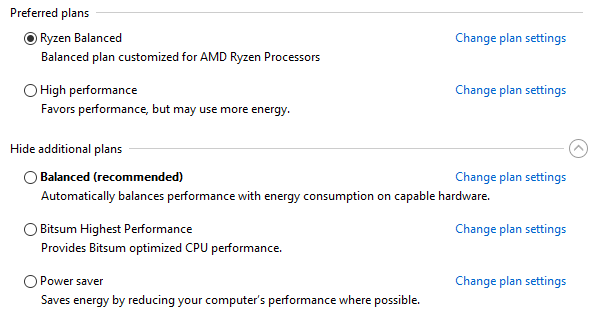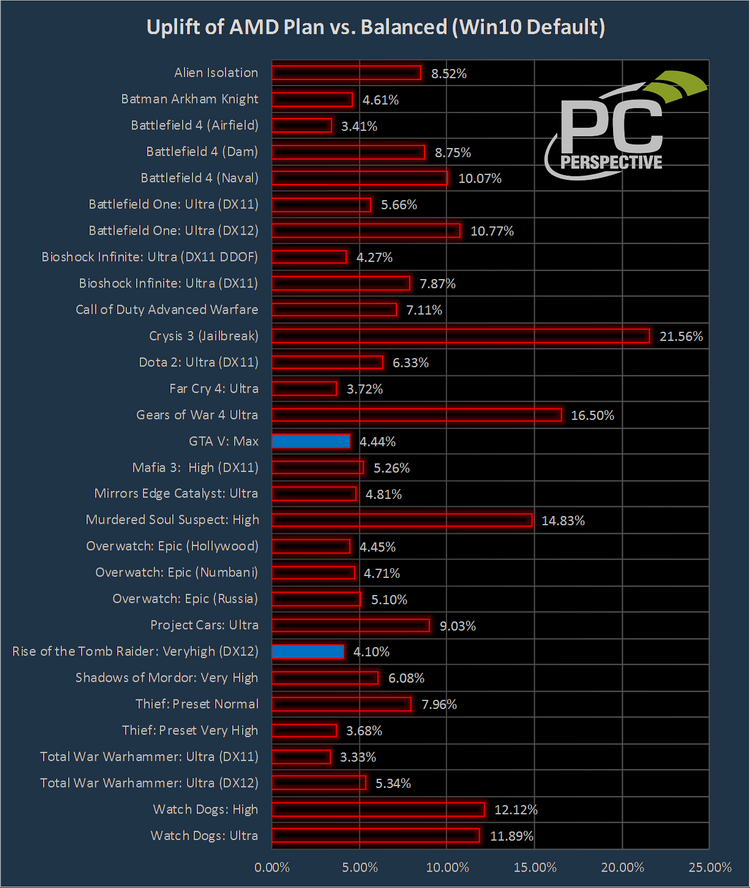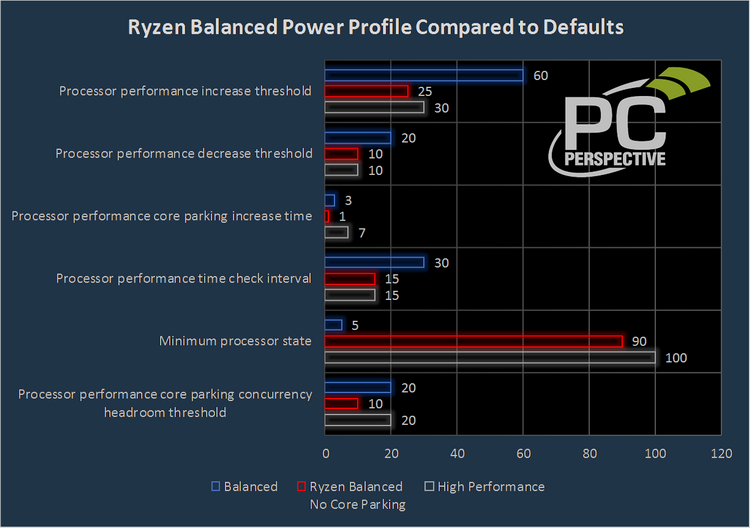В конце 2016 года компания AMD взбудоражила рынок, представив новое поколение процессоров Ryzen для настольных компьютеров. Чуть позже появились также решения для серверов и HEDT. Когда новинки появились массово у пользователей в начале-середине 2017-го года, стало понятно что серия удачна и она надолго. За сравнительно небольшие деньги AMD Ryzen предлагал до 8-ми современных быстрых ядер и до 16-ти потоков.
Чуть позже энтузиасты выяснили интересную особенность: оказалось, что производительность одного и того же процессора в Windows 7 и Windows 10 может отличаться на 10-15%. Эта информация дошла до разработчиков, и вскоре в набор драйверов для чипсетов AMD были добавлены фирменные планы питания для Windows 10. Из этой статьи вы узнаете как включить AMD Ryzen Balanced Power Plan в Windows 10.
Что такое AMD Ryzen Balanced Power Plan
Вместе с Ryzen появилась фирменная технология SenseMI (иными словами, технология умного автоматического буста), с помощью которой можно регулировать частоту процессора и его напряжение для максимального увеличения скорости работы в определённое время. Смены напряжения и, соответственно, частоты процессора происходят очень быстро, за период до 1 мс. Также переходы управляются параметром P-States — комбинацией частоты и напряжения, запрашиваемые операционной системой, следовательно, успешность работы SenseMI во многом зависит и от операционной системы Windows 10.
Проблема заниженной производительности в том, что в обычном режиме (план энергопитания Сбалансированный) пороговые значения между переключениями напряжения и, следовательно, частоты завышены. Эту проблему как раз и решает выпуск компанией AMD нового плана энергопотребления — AMD Ryzen Balanced Power Plan Windows 10.
В этом новом режиме Windows 10 лучше взаимодействует с процессорами Ryzen, при этом они остаются энергоэффективными при достижении максимально возможной производительности.
Как включить AMD Ryzen Balanced Power Plan
Для установки и включения AMD Ryzen Balanced Power Plan следует загрузить и установить свежий пакет драйверов для ваших комплектующих AMD на материнской плате с официального сайта поддержки продуктов компании AMD, если вы ещё этого не сделали. В меню выберите пункт Chipsets и далее — свой вариант чипсета.
Узнать какой именно чипсет у вас можно, например, с помощью утилиты AIDA64 в разделе Системная плата:
В данном конкретном случае это чипсет B450 и он находится в группе сокетов AMD Socket AM4 промежуточного меню. Увы, поиски нужного драйвера в этом интерфейсе не очень просты и очевидны.
Нажмите кнопку Отправить (очевидно, имеется ввиду отправка информации для поиска). Появится результат:
Выберите драйвер нужной разрядности (32 или 64), скачайте пакет и установите его. После окончания установки загрузите Панель управления, далее запустите апплет Электропитание.
В окне апплета можно выбрать любой из доступных планов питания для Вашей системы, в частности и планы электропитания от AMD.
Теперь вы знаете как включить ryzen balanced power plan.
Тестирование планов электропитания
Одной из самых распространённых микроархитектур от AMD является Zen 2. Её используют центральные процессоры 3000-й серии. Чтобы понять что лучше AMD Ryzen balanced или максимальная производительность проверим релевантность настройки и использования модифицированного плана электропитания от AMD на примере процессора Ryzen 3600X.
Для сравнения производительности будем использовать Cinebench R20 и тесты пакета Futuremark 3DMark (ver. 5.25.802.0).
Конфигурация стендового компьютера:
- Процессор: AMD Ryzen 3600X 3.8 ГГц 6/12;
- ОЗУ: HyperX DDR4 16 Гб OC 3733 МГц;
- Материнская плата: Asus ROG Strix B-450 Gaming;
- Видеокарта: Sapphire Pulse AMD RX 5700XT;
- Блок питания: Fractal Design Edison 750W;
- Жёсткий диск: ADATA SX 8200 1 Тб;
- ОС: Windows 10 x64.
Результаты тестов Cinebench R20
Стандартный сбалансированный режим плана электропитания от Майкрософт показывает результат 3273 балла при пиковой частоте 4093 МГц и энергопотреблении на уровне 70 Вт:
План электропитания windows 10 Ryzen Bananced и High Performance показывают результаты 3418 и 3490 балла при пиковой частоте 4107 МГц и 4190 МГц у отдельных ядер и энергопотреблении на уровне 69,2 Вт и 70,2 Вт соответственно:
Результаты тестов 3DMark
Для стандартного сбалансированного плана электропитания от Microsoft получаем такие оценки в наборе тестов Fire Strike Extreme:
- Оценка графической подсистемы — 13631.
- Оценка теста физических характеристик — 18456.
- Комбинированный тест — 5531.
- Общая оценка — 12310.
А схема питания AMD Ryzen Balanced показала такие результаты в этом тесте:
- Оценка графической подсистемы — 13659.
- Оценка теста физических характеристик — 18296.
- Комбинированный тест — 5522.
- Общая оценка — 12294.
Для режима AMD Ryzen High Performance:
- Оценка графической подсистемы — 13603.
- Оценка теста физических характеристик — 18588.
- Комбинированный тест — 5528.
- Общая оценка — 12300.
Выводы
Как можно видеть по результатам тестирования выше, использование планов электропитания для Windows 10 AMD Ryzen Balanced либо AMD Ryzen High Performance даёт увеличение производительности в бенчмарке Cinebench R20 (который может служить индикатором быстродействия системы в профессиональных задачах) до 6%, при такой же энергоэффективности. Разница же оценок в 3DMark (тест производительности в играх) практически укладывается в погрешность измерений, за исключением оценки расчёта физики, но и там буст невелик.
В целом, можно рекомендовать настройку и использование планов электропитания для AMD Ryzen. Наличие такого процессора, естественно, необходимо, в противном случае, скорее всего, даже сами планы не будут установлены в систему при установке драйверов для чипсета.
Была ли эта статья полезной?
ДаНет
Оцените статью:

Загрузка…
Об авторе
Над статьей работал не только её автор, но и другие люди из команды te4h, администратор (admin), редакторы или другие авторы. Ещё к этому автору могут попадать статьи, авторы которых написали мало статей и для них не было смысла создавать отдельные аккаунты.
AMD разработала для Ryzen новый профиль питания
Процессоры AMD Ryzen получились более чем достойными, но не обошлось без определённых недоработок. Однако AMD активно взялась исправлять таковые.
К примеру, для процессоров Ryzen уже готов новый профиль энергопотребления ОС Windows 10. Он называется AMD Ryzen Balanced. Суть в том, что стандартный профиль Balanced, рекомендуемый системой, не совсем корректно работает с новинками AMD.
Технология AMD SenseMI, впервые появившаяся на Ryzen, позволяет процессорам быстро выполнять тонкие настройки напряжения и частоты для получения максимальной производительности в каждый момент времени. Изменения могут происходить каждую 1 мс, но это зависит не только от самого процессора. Такие переходы регулируются параметром P-States — комбинацией частоты и напряжения, запрашиваемой операционной системой. Соответственно, эффективность работы технологии зависит и от ОС.
Проблема в том, что в профиле Balanced увеличены пороговые значения и задержки между переходами, что не позволяет CPU Ryzen работать максимально эффективно. Кроме того, в таком режиме «отдыхающие» ядра активируются позже. Стандартный режим High Perfomance решает проблему, но при этом любой CPU становится менее энергоэффективным.
Новый режим AMD Ryzen Balanced совмещает в себе черты двух стандартных. В таком режиме операционная система корректнее работает с новыми CPU, что позволяет им оставаться энергоэффективными при достижении максимальной производительности в определённый момент времени. На диаграмме ниже можно увидеть, насколько повышается производительность CPU при включении режимов High Perfomance и AMD Ryzen Balanced в сравнении с обычным Balanced.
Как можно видеть, производительность в новом режиме вырастает почти также, как и в High Perfomance, но при этом CPU потребляет меньше энергии. В некоторых играх режим позволяет добиться прироста производительности почти в 9%, что немало.
На данный момент, чтобы получить в системе новый профиль питания, необходимо загрузить соответствующий файл и установить его вручную. Но вскоре AMD добавит его в драйвер и профиль AMD Ryzen Balanced в Windows 10 будет активироваться по умолчанию.

Неделю назад представитель AMD заявил, что готово новое обновление пакета AMD Generic Encapsulated Software Architecture (AGESA), на основании которого должен быть исправлен BIOS материнских плат для процессоров Ryzen. Точнее, с помощью BIOS будут устранены некоторые недочёты, допущенные при проектировании процессоров на архитектуре Zen. Среди прочих улучшений в первое исправление AGESA вошла коррекция состояния режима потребления платформы AMD Ryzen под управлением Windows 10. Вскоре при настройке плана потребления в Windows 10 появится выбор одного из трёх состояний: сбалансированный стандартный, сбалансированный для AMD Ryzen и план для высокой производительности (обновлённый драйвер для чипсетов AMD брать здесь, его надо установить самостоятельно).
Установка драйвера и выбор плана «High Performance» делает две интересных вещи. Во-первых, снижается латентность и порог переключения процессоров Ryzen в новое состояние P-States (комбинация напряжения питания и тактовой частоты). Иначе говоря, процессоры Ryzen быстрее и агрессивнее возвращаются к производительной работе. Во-вторых, активнее включаются в работу простаивающие ядра. Например, при выборе сбалансированной работы до превышения уровня нагрузки 10% «просыпалось» только одно ядро из восьми (одно — физическое и второе — SMT). Выбор плана «High Performance» заставляет сразу включаться большему числу ядер, что может понадобиться в играх. Настолько это эффективные новшество, можно судить из графика ниже, в котором сравнивается производительности системы при выборе планов «High Performance» и «AMD Ryzen Balanced».
Пока, как мы видим, выигрыш небольшой, но он ничего не стоит для пользователей и по мере оптимизации ПО и игр будет становиться всё больше и больше.
-
#1
In another Community Update from Robert Hallock, some more developments on the platform have been announced, after the last one’s commitment to upcoming updates. AMD has done good on their promise for an optimized power profile for Windows systems that better leverages Ryzen’s design and features.AMD’s SenseMI technology allows the processor to fine-tune voltages and frequency on-the-fly, with a much higher granularity and lower latency than any software-based solution — such as Windows 10’s power plans. These transitions between frequencies and voltages are governed by «P-States», which are frequency/voltage combinations requested by the operating system.
It so happens that Windows 10’s Balanced power plan delays changes towards faster P-states — which bring increased frequency and voltage and hence, power consumption — so as to save more power. However, this means that there is an increased delay (latency) between the moment more processing power is required of the Ryzen processor and the moment the processor is allowed to change P-states to deliver it. Add to this the fact that Ryzen takes a significant performance hit with core-parking enabled, and Windows 10’s balanced power plan attempts to park all logical processors beyond the first 10% whenever possible means that most of Ryzen’s cores will have to be unparked before they can process any kind of workload — and this in itself incurs in an increased latency and, therefore, performance penalty.
AMD’s «Ryzen Balanced» power plan works by reducing the timers and thresholds for P-state transitions to improve clockspeed ramping, which lets the processor’s SenseMI technology do its work; and disables core parking altogether (which really shouldn’t be a problem, considering Ryzen’s energy-efficient design.) AMD says that the performance gains are actually on par with the High Performance plan in various games, on a computer configured with an AMD Ryzen 7 1800X, a Gigabyte GA-AX370-Gaming5, 2x 8 GB DDR4-2933, a GeForce GTX 1080 (378.92 driver), and Windows 10 x64 (build 1607).
AMD says there are other games they’ve seen benefits in (Total War: WARHAMMER, Alien: Isolation, Crysis 3, Gears of War 4, Battlefield 4, Project Cars and other unnamed ones). AMD says that not every game behaves in a way where a change in power plans has an impact on the Ryzen processor, but there is definitely a considerable number of them to warrant a change.
It really is commendable to see AMD so invested with its community updates, improving a platform that had some quirks on launch day (and still has, though fewer in number.)
View at TechPowerUp Main Site
-
#2
So I get gaming improvements without losing power savings feature. Sold!
-
#3
So, windows was or wasn’t a problem in the way the os handled the CPU loads?
Great move to introduce a tool from AMD themselves to solve what MS should handle from start.
-
#4
If you look at what they changed, it’s no longer balance plan IMO.
They raised the min processor state from 5% to 90%, so its almost HP in that regard.
-
#5
If you look at what they changed, it’s no longer balance plan IMO.
They raised the min processor state from 5% to 90%, so its almost HP in that regard.
I’m pretty sure that is the point. By setting it to 90%, you essentially take the OS out of deciding the P-States. The OS is too slow at switching the P-States and is too biased towards the low ones. The processor and the built in SenseMI will then handle the P-States.
It would be cool if @W1zzard could do a quick test to check idle clock speeds and power consumption using the Stock Balanced plan, the AMD Ryzen Balanced plan, and the High Performance plan.
-
#6
If you look at what they changed, it’s no longer balance plan IMO.
They raised the min processor state from 5% to 90%, so its almost HP in that regard.
They raised the WINDOWS min processor state…Ryzen is a different beast. All power management is handled by a (purportedly self learning) processor on the die itself (SenseMI). This should allow the hardware itself to regulate its own power management and not rely on software for it, thereby bypassing Windows.
Unless I’m completely misinterpreting what SenseMI is, which is completely possible.
JAT
Edit: Ninja’d by Newtekie
-
#7
They raised the WINDOWS min processor state…Ryzen is a different beast. All power management is handled by a (purportedly self learning) processor on the die itself (SenseMI). This should allow the hardware itself to regulate its own power management and not rely on software for it, thereby bypassing Windows.
Unless I’m completely misinterpreting what SenseMI is, which is completely possible.
JAT
Edit: Ninja’d by Newtekie
That’s marketing PR, you can do same thing on any CPU, Intel etc, yeh you get a small improvements but like I said its more a HP power plan. meaning clocks will jump to max instead of stepping through them with demand.
Test?
https://www.pcper.com/news/Processors/AMD-Releases-Ryzen-Balanced-Power-Plan-Test-Results-Inside
-
#8
Ran some tests last night using a power meter and found that, even when forcing no clock change or downvolts, Ryzen… uh… finds a way.
Minimum reported power usage at idle:
63.2w on Balanced (50% core park)
64.4w on BIOS forced max clock speed (Ryzen w/ .00025v reduction)
64.7w on Ryzen Balanced
65.0w on High Performance
67.1w on BIOS Fixed Voltage (Ryzen)
1.8w swing between Balanced and HP is pretty good.
Last edited: Apr 7, 2017
-
#9
So, more or less what happened with bulldozer (disabling core parking patch). 
Heh, I’ll do my fine tuning manually trough the registry like before, same effect but I get to customize it
-
#10
That’s marketing PR, you can do same thing on any CPU, Intel etc, yeh you get a small improvements but like I said its more a HP power plan. meaning clocks will jump to max instead of stepping through them with demand.
Test?
https://www.pcper.com/news/Processors/AMD-Releases-Ryzen-Balanced-Power-Plan-Test-Results-Inside
Not sure what your beef is or agenda but they clearly explain what is happening. The consumption differences are small, but the effect in performance is not.
Since Windows power management (not the scheduler) is not yet Ryzen aware, its default settings result in overly aggressive core parking when driving a Ryzen CPU. Until a lower level change can take place, AMD has released a custom Ryzen Balanced Power Plan that tweaks some of the P-state transition values and a few other settings to help realize the performance gains previously seen by folks shifting to the High Performance mode while keeping idle power consumption much closer to that of the Balanced plan. Here are AMD’s claimed performance gains (vs. Balanced) with their new Ryzen Balanced Power Plan
Bottom line it’s been explained pretty well here:
I’m pretty sure that is the point. By setting it to 90%, you essentially take the OS out of deciding the P-States. The OS is too slow at switching the P-States and is too biased towards the low ones. The processor and the built in SenseMI will then handle the P-States
-
#11
Not sure what your beef is or agenda but they clearly explain what is happening. The consumption differences are small, but the effect in performance is not.
Bottom line it’s been explained pretty well here:
My «beef» is calling this balanced optimized power plan, I have done the same on many CPU, no magic here anyone can edit power plan to get this, its so small improvement.
As for wattage usage, it should be extremely minimal when system is idle, only when some partial load would it go up anything noticeable.
This is a band aid/hack IMO until they fix it properly in OS or micro-code.
This could also be a side affect of having so many cores/threads but used on a low load app that only uses a handful. So you end up with low utilization on each core/thread so clocks don’t ramp up fast.
Last edited: Apr 7, 2017
-
#12
My «beef» is calling this balanced optimized power plan, I have done the same on many CPU, no magic here anyone can edit power plan to get this, its so small improvement.
As for wattage usage, it should be extremely minimal when system is idle, only when some partial load would it go up anything noticeable.This is a band aid/hack IMO until they fix it properly in OS or micro-code.
This could also be a side affect of having so many cores/threads but used on a low load app that only uses a handful. So you end up with low utilization on each core/thread so clocks don’t ramp up fast.
Just don’t compare new gen CPUs like Ryzen with tens of sensors on die with previous ones. Win10 is too old tech of sw to compare with latest tech hw features.
-
#13
So, windows was or wasn’t a problem in the way the os handled the CPU loads?
Great move to introduce a tool from AMD themselves to solve what MS should handle from start.
Windows was and still is the problem. AMD stated in a press release that Windows wasn’t causing issues but that was mostly ass kissing. While it isn’t causing issues, it most certainly isn’t optimal.
-
#14
Windows was and still is the problem. AMD stated in a press release that Windows wasn’t causing issues but that was mostly ass kissing. While it isn’t causing issues, it most certainly isn’t optimal.
How can anyone blame Windows for not understanding the intricacies and peculiarities of a completely new CPU architecture and optimizing its operation accordingly by itself!!?
If any OS can do that, its developer should win a special Nobel prize because that would be an earth-shattering development in artificial intelligence.
Of course AMD won’t say it was Window’s or Microsoft’s fault. They would be the laughing stock with such a ridiculous claim. In fact it’s only AMD’s fault not doing all these tests BEFORE marketing the product and not issuing optimizations such as this (and probably more that’s on the way) on day 1 (heck, day 0).
-
#15
I always want my hardware to adapt to the old software. Hardware can change, old software wont be compiled again or updated often.
-
#16
How can anyone blame Windows for not understanding the intricacies and peculiarities of a completely new CPU architecture and optimizing its operation accordingly by itself!!?
If any OS can do that, its developer should win a special Nobel prize because that would be an earth-shattering development in artificial intelligence.
Of course AMD won’t say it was Window’s or Microsoft’s fault. They would be the laughing stock with such a ridiculous claim. In fact it’s only AMD’s fault not doing all these tests BEFORE marketing the product and not issuing optimizations such as this (and probably more that’s on the way) on day 1 (heck, day 0).
Totally agree, but I’d like to add that AMD prob didn’t do that for lack of knowledge nor good will, but most likely $$ restraints and pressure for release (more $$ involved). As a 1700 owner, I’m quite happy with my purchase, specially because this thing is cooler and more power efficient than the equivalent Intels (heck, it even beats 4 core Intels), and as my PC is actually the HTPC, < power means < noise = win.
-
#17
Some ignorance around here…
HW will always get ahead of SW and SW will always try to catch up with HW. Just because HW introduces new features and abilities and THEN code gets patched to take advantage of them. Don’t try to make MS seem good and AMD bad for the windows not being able to take advantage of Ryzen’s totally new arch. It is proven now that windows wasn’t ready to show Ryzen’s true potential in all cases and needed some patches, updates or even this script that AMD made themselves.
-
#18
Some ignorance around here…
HW will always get ahead of SW and SW will always try to catch up with HW. Just because HW introduces new features and abilities and THEN code gets patched to take advantage of them. Don’t try to make MS seem good and AMD bad for the windows not being able to take advantage of Ryzen’s totally new arch. It is proven now that windows wasn’t ready to show Ryzen’s true potential in all cases and needed some patches, updates or even this script that AMD made themselves.
Talk about ignorance…
Why is it MS’s responsibility for their OS to be READILY optimized for a completely new CPU architecture??
Really, you’re contradicting even yourself: «HW will always get ahead of SW and SW will always try to catch up with HW. Just because HW introduces new features and abilities and THEN code gets patched to take advantage of them. »
This is correct, and it was never the OS developer’s RESPONSIBILITY to optimize their OS for a new CPU architecture BY THEMSELVES. What happens typically, which is what also happened here, the CPU developer INFORMS the OS developer and CONTRIBUTES to said patches so everything works as it should. AMD can’t expect anyone else but themselves to know all the ins and outs of their new CPU architecture.
AMD dropped the ball a little here, and I’m not trashing them for that, it’s just the fact of the matter, as it is that they have limited resources to make everything perfect from day 1.
-
#19
FWIW Intel’s Core arch was far from perfect on launch day and even in subsequent refreshes there was a host of issues, some even left unresolved entirely. Now this applied mostly to Intel’s own chipset features, but still, it goes to show that every CPU launch has some hiccups.
Business as usual. Everything that is new will require some time and usage to reach its full potential. Once you launch a product, you get massive amounts of data to act on and support findings to improve a piece of software or hardware.
-
#20
Talk about ignorance…
Why is it MS’s responsibility for their OS to be READILY optimized for a completely new CPU architecture??
Really, you’re contradicting even yourself: «HW will always get ahead of SW and SW will always try to catch up with HW. Just because HW introduces new features and abilities and THEN code gets patched to take advantage of them. «
This is correct, and it was never the OS developer’s RESPONSIBILITY to optimize their OS for a new CPU architecture BY THEMSELVES. What happens typically, which is what also happened here, the CPU developer INFORMS the OS developer and CONTRIBUTES to said patches so everything works as it should. AMD can’t expect anyone else but themselves to know all the ins and outs of their new CPU architecture.AMD dropped the ball a little here, and I’m not trashing them for that, it’s just the fact of the matter, as it is that they have limited resources to make everything perfect from day 1.
I didn’t about Win10 needing to be ready for Ruzen prior to the launch, or even in the 1st month after that. Is anything that I wrote wrong? If not, MS is the one responsible after the Ryzen’s launch to make their OS operate optimal when using those CPUs and vice versa. Point is, MS left AMD make this small script and they didn’t. Kudos to AMD, meh for MS from my side of view.
-
#21
I didn’t about Win10 needing to be ready for Ruzen prior to the launch, or even in the 1st month after that. Is anything that I wrote wrong? If not, MS is the one responsible after the Ryzen’s launch to make their OS operate optimal when using those CPUs and vice versa. Point is, MS left AMD make this small script and they didn’t. Kudos to AMD, meh for MS from my side of view.
Sorry, that’s just wrong, its not MS fault, its up to AMD to supply fix/code for «there» CPU, its all on there hands.
If I got a new fangled GPU would it be upto MS for drivers and support, of course not.
Anyway, all this should of been taken care of months before release.
Also for last two gen Intel uses HW for speedstep tech, not relying on the OS, which ends up much faster latency response.
-
#22
I always want my hardware to adapt to the old software. Hardware can change, old software wont be compiled again or updated often.
Old software is baggage for new hardware as is old hardware for new software. Expecting new HW support old SW makes only myopic sense and hinders progress if granted.
All in all, I’m not bashing AMD at all, and true that all new CPU architectures including Intel’s had initial hiccups and everything got optimized as best they could in time. Same thing with AMD, which I’m rooting for. I’m on a mobile workstation now and can’t see myself building a desktop in the near future (unless I win the lottery, lol), and I’m eagerly waiting for 8-core Ryzen parts inside a mobile workstation / desktop replacement notebook
Frick
Fishfaced Nincompoop
-
#23
FWIW Intel’s Core arch was far from perfect on launch day and even in subsequent refreshes there was a host of issues, some even left unresolved entirely. Now this applied mostly to Intel’s own chipset features, but still, it goes to show that every CPU launch has some hiccups.
Business as usual. Everything that is new will require some time and usage to reach its full potential. Once you launch a product, you get massive amounts of data to act on and support findings to improve a piece of software or hardware.
I know my G3220 and Windows 10 stock ramps up the clocks way to slowly. Disabling Speedstep makes a massive difference in everyday use.
I always want my hardware to adapt to the old software. Hardware can change, old software wont be compiled again or updated often.
-
#24
I always want my hardware to adapt to the old software. Hardware can change, old software wont be compiled again or updated often.
Best sarcasm I’ve ever read for a long time
-
#25
Sorry, that’s just wrong, its not MS fault, its up to AMD to supply fix/code for «there» CPU, its all on there hands.
If I got a new fangled GPU would it be upto MS for drivers and support, of course not.Anyway, all this should of been taken care of months before release.
Also for last two gen Intel uses HW for speedstep tech, not relying on the OS, which ends up much faster latency response.
How the ? do you know AMD didn’t address this with MS already? Do you think they create something new without giving feedback to their partners? And your «beef» is with what they call it, lmao. Who cares what your beef is? What the hell is this with MS on a platform BS. MS sucks ass. They keep screwing customers over every chance they get and they don’t give a flying five. How many times do they need to break Windows 10 this month? Then steal how much more of your info? And you expect them to be on top of any new hardware, gimmie a break.
-
#1
In another Community Update from Robert Hallock, some more developments on the platform have been announced, after the last one’s commitment to upcoming updates. AMD has done good on their promise for an optimized power profile for Windows systems that better leverages Ryzen’s design and features.AMD’s SenseMI technology allows the processor to fine-tune voltages and frequency on-the-fly, with a much higher granularity and lower latency than any software-based solution — such as Windows 10’s power plans. These transitions between frequencies and voltages are governed by «P-States», which are frequency/voltage combinations requested by the operating system.
It so happens that Windows 10’s Balanced power plan delays changes towards faster P-states — which bring increased frequency and voltage and hence, power consumption — so as to save more power. However, this means that there is an increased delay (latency) between the moment more processing power is required of the Ryzen processor and the moment the processor is allowed to change P-states to deliver it. Add to this the fact that Ryzen takes a significant performance hit with core-parking enabled, and Windows 10’s balanced power plan attempts to park all logical processors beyond the first 10% whenever possible means that most of Ryzen’s cores will have to be unparked before they can process any kind of workload — and this in itself incurs in an increased latency and, therefore, performance penalty.
AMD’s «Ryzen Balanced» power plan works by reducing the timers and thresholds for P-state transitions to improve clockspeed ramping, which lets the processor’s SenseMI technology do its work; and disables core parking altogether (which really shouldn’t be a problem, considering Ryzen’s energy-efficient design.) AMD says that the performance gains are actually on par with the High Performance plan in various games, on a computer configured with an AMD Ryzen 7 1800X, a Gigabyte GA-AX370-Gaming5, 2x 8 GB DDR4-2933, a GeForce GTX 1080 (378.92 driver), and Windows 10 x64 (build 1607).
AMD says there are other games they’ve seen benefits in (Total War: WARHAMMER, Alien: Isolation, Crysis 3, Gears of War 4, Battlefield 4, Project Cars and other unnamed ones). AMD says that not every game behaves in a way where a change in power plans has an impact on the Ryzen processor, but there is definitely a considerable number of them to warrant a change.
It really is commendable to see AMD so invested with its community updates, improving a platform that had some quirks on launch day (and still has, though fewer in number.)
View at TechPowerUp Main Site
-
#2
So I get gaming improvements without losing power savings feature. Sold!
-
#3
So, windows was or wasn’t a problem in the way the os handled the CPU loads?
Great move to introduce a tool from AMD themselves to solve what MS should handle from start.
-
#4
If you look at what they changed, it’s no longer balance plan IMO.
They raised the min processor state from 5% to 90%, so its almost HP in that regard.
-
#5
If you look at what they changed, it’s no longer balance plan IMO.
They raised the min processor state from 5% to 90%, so its almost HP in that regard.
I’m pretty sure that is the point. By setting it to 90%, you essentially take the OS out of deciding the P-States. The OS is too slow at switching the P-States and is too biased towards the low ones. The processor and the built in SenseMI will then handle the P-States.
It would be cool if @W1zzard could do a quick test to check idle clock speeds and power consumption using the Stock Balanced plan, the AMD Ryzen Balanced plan, and the High Performance plan.
-
#6
If you look at what they changed, it’s no longer balance plan IMO.
They raised the min processor state from 5% to 90%, so its almost HP in that regard.
They raised the WINDOWS min processor state…Ryzen is a different beast. All power management is handled by a (purportedly self learning) processor on the die itself (SenseMI). This should allow the hardware itself to regulate its own power management and not rely on software for it, thereby bypassing Windows.
Unless I’m completely misinterpreting what SenseMI is, which is completely possible.
JAT
Edit: Ninja’d by Newtekie
-
#7
They raised the WINDOWS min processor state…Ryzen is a different beast. All power management is handled by a (purportedly self learning) processor on the die itself (SenseMI). This should allow the hardware itself to regulate its own power management and not rely on software for it, thereby bypassing Windows.
Unless I’m completely misinterpreting what SenseMI is, which is completely possible.
JAT
Edit: Ninja’d by Newtekie
That’s marketing PR, you can do same thing on any CPU, Intel etc, yeh you get a small improvements but like I said its more a HP power plan. meaning clocks will jump to max instead of stepping through them with demand.
Test?
https://www.pcper.com/news/Processors/AMD-Releases-Ryzen-Balanced-Power-Plan-Test-Results-Inside
-
#8
Ran some tests last night using a power meter and found that, even when forcing no clock change or downvolts, Ryzen… uh… finds a way.
Minimum reported power usage at idle:
63.2w on Balanced (50% core park)
64.4w on BIOS forced max clock speed (Ryzen w/ .00025v reduction)
64.7w on Ryzen Balanced
65.0w on High Performance
67.1w on BIOS Fixed Voltage (Ryzen)
1.8w swing between Balanced and HP is pretty good.
Last edited: Apr 7, 2017
-
#9
So, more or less what happened with bulldozer (disabling core parking patch). 
Heh, I’ll do my fine tuning manually trough the registry like before, same effect but I get to customize it
-
#10
That’s marketing PR, you can do same thing on any CPU, Intel etc, yeh you get a small improvements but like I said its more a HP power plan. meaning clocks will jump to max instead of stepping through them with demand.
Test?
https://www.pcper.com/news/Processors/AMD-Releases-Ryzen-Balanced-Power-Plan-Test-Results-Inside
Not sure what your beef is or agenda but they clearly explain what is happening. The consumption differences are small, but the effect in performance is not.
Since Windows power management (not the scheduler) is not yet Ryzen aware, its default settings result in overly aggressive core parking when driving a Ryzen CPU. Until a lower level change can take place, AMD has released a custom Ryzen Balanced Power Plan that tweaks some of the P-state transition values and a few other settings to help realize the performance gains previously seen by folks shifting to the High Performance mode while keeping idle power consumption much closer to that of the Balanced plan. Here are AMD’s claimed performance gains (vs. Balanced) with their new Ryzen Balanced Power Plan
Bottom line it’s been explained pretty well here:
I’m pretty sure that is the point. By setting it to 90%, you essentially take the OS out of deciding the P-States. The OS is too slow at switching the P-States and is too biased towards the low ones. The processor and the built in SenseMI will then handle the P-States
-
#11
Not sure what your beef is or agenda but they clearly explain what is happening. The consumption differences are small, but the effect in performance is not.
Bottom line it’s been explained pretty well here:
My «beef» is calling this balanced optimized power plan, I have done the same on many CPU, no magic here anyone can edit power plan to get this, its so small improvement.
As for wattage usage, it should be extremely minimal when system is idle, only when some partial load would it go up anything noticeable.
This is a band aid/hack IMO until they fix it properly in OS or micro-code.
This could also be a side affect of having so many cores/threads but used on a low load app that only uses a handful. So you end up with low utilization on each core/thread so clocks don’t ramp up fast.
Last edited: Apr 7, 2017
-
#12
My «beef» is calling this balanced optimized power plan, I have done the same on many CPU, no magic here anyone can edit power plan to get this, its so small improvement.
As for wattage usage, it should be extremely minimal when system is idle, only when some partial load would it go up anything noticeable.This is a band aid/hack IMO until they fix it properly in OS or micro-code.
This could also be a side affect of having so many cores/threads but used on a low load app that only uses a handful. So you end up with low utilization on each core/thread so clocks don’t ramp up fast.
Just don’t compare new gen CPUs like Ryzen with tens of sensors on die with previous ones. Win10 is too old tech of sw to compare with latest tech hw features.
-
#13
So, windows was or wasn’t a problem in the way the os handled the CPU loads?
Great move to introduce a tool from AMD themselves to solve what MS should handle from start.
Windows was and still is the problem. AMD stated in a press release that Windows wasn’t causing issues but that was mostly ass kissing. While it isn’t causing issues, it most certainly isn’t optimal.
-
#14
Windows was and still is the problem. AMD stated in a press release that Windows wasn’t causing issues but that was mostly ass kissing. While it isn’t causing issues, it most certainly isn’t optimal.
How can anyone blame Windows for not understanding the intricacies and peculiarities of a completely new CPU architecture and optimizing its operation accordingly by itself!!?
If any OS can do that, its developer should win a special Nobel prize because that would be an earth-shattering development in artificial intelligence.
Of course AMD won’t say it was Window’s or Microsoft’s fault. They would be the laughing stock with such a ridiculous claim. In fact it’s only AMD’s fault not doing all these tests BEFORE marketing the product and not issuing optimizations such as this (and probably more that’s on the way) on day 1 (heck, day 0).
-
#15
I always want my hardware to adapt to the old software. Hardware can change, old software wont be compiled again or updated often.
-
#16
How can anyone blame Windows for not understanding the intricacies and peculiarities of a completely new CPU architecture and optimizing its operation accordingly by itself!!?
If any OS can do that, its developer should win a special Nobel prize because that would be an earth-shattering development in artificial intelligence.
Of course AMD won’t say it was Window’s or Microsoft’s fault. They would be the laughing stock with such a ridiculous claim. In fact it’s only AMD’s fault not doing all these tests BEFORE marketing the product and not issuing optimizations such as this (and probably more that’s on the way) on day 1 (heck, day 0).
Totally agree, but I’d like to add that AMD prob didn’t do that for lack of knowledge nor good will, but most likely $$ restraints and pressure for release (more $$ involved). As a 1700 owner, I’m quite happy with my purchase, specially because this thing is cooler and more power efficient than the equivalent Intels (heck, it even beats 4 core Intels), and as my PC is actually the HTPC, < power means < noise = win.
-
#17
Some ignorance around here…
HW will always get ahead of SW and SW will always try to catch up with HW. Just because HW introduces new features and abilities and THEN code gets patched to take advantage of them. Don’t try to make MS seem good and AMD bad for the windows not being able to take advantage of Ryzen’s totally new arch. It is proven now that windows wasn’t ready to show Ryzen’s true potential in all cases and needed some patches, updates or even this script that AMD made themselves.
-
#18
Some ignorance around here…
HW will always get ahead of SW and SW will always try to catch up with HW. Just because HW introduces new features and abilities and THEN code gets patched to take advantage of them. Don’t try to make MS seem good and AMD bad for the windows not being able to take advantage of Ryzen’s totally new arch. It is proven now that windows wasn’t ready to show Ryzen’s true potential in all cases and needed some patches, updates or even this script that AMD made themselves.
Talk about ignorance…
Why is it MS’s responsibility for their OS to be READILY optimized for a completely new CPU architecture??
Really, you’re contradicting even yourself: «HW will always get ahead of SW and SW will always try to catch up with HW. Just because HW introduces new features and abilities and THEN code gets patched to take advantage of them. »
This is correct, and it was never the OS developer’s RESPONSIBILITY to optimize their OS for a new CPU architecture BY THEMSELVES. What happens typically, which is what also happened here, the CPU developer INFORMS the OS developer and CONTRIBUTES to said patches so everything works as it should. AMD can’t expect anyone else but themselves to know all the ins and outs of their new CPU architecture.
AMD dropped the ball a little here, and I’m not trashing them for that, it’s just the fact of the matter, as it is that they have limited resources to make everything perfect from day 1.
-
#19
FWIW Intel’s Core arch was far from perfect on launch day and even in subsequent refreshes there was a host of issues, some even left unresolved entirely. Now this applied mostly to Intel’s own chipset features, but still, it goes to show that every CPU launch has some hiccups.
Business as usual. Everything that is new will require some time and usage to reach its full potential. Once you launch a product, you get massive amounts of data to act on and support findings to improve a piece of software or hardware.
-
#20
Talk about ignorance…
Why is it MS’s responsibility for their OS to be READILY optimized for a completely new CPU architecture??
Really, you’re contradicting even yourself: «HW will always get ahead of SW and SW will always try to catch up with HW. Just because HW introduces new features and abilities and THEN code gets patched to take advantage of them. «
This is correct, and it was never the OS developer’s RESPONSIBILITY to optimize their OS for a new CPU architecture BY THEMSELVES. What happens typically, which is what also happened here, the CPU developer INFORMS the OS developer and CONTRIBUTES to said patches so everything works as it should. AMD can’t expect anyone else but themselves to know all the ins and outs of their new CPU architecture.AMD dropped the ball a little here, and I’m not trashing them for that, it’s just the fact of the matter, as it is that they have limited resources to make everything perfect from day 1.
I didn’t about Win10 needing to be ready for Ruzen prior to the launch, or even in the 1st month after that. Is anything that I wrote wrong? If not, MS is the one responsible after the Ryzen’s launch to make their OS operate optimal when using those CPUs and vice versa. Point is, MS left AMD make this small script and they didn’t. Kudos to AMD, meh for MS from my side of view.
-
#21
I didn’t about Win10 needing to be ready for Ruzen prior to the launch, or even in the 1st month after that. Is anything that I wrote wrong? If not, MS is the one responsible after the Ryzen’s launch to make their OS operate optimal when using those CPUs and vice versa. Point is, MS left AMD make this small script and they didn’t. Kudos to AMD, meh for MS from my side of view.
Sorry, that’s just wrong, its not MS fault, its up to AMD to supply fix/code for «there» CPU, its all on there hands.
If I got a new fangled GPU would it be upto MS for drivers and support, of course not.
Anyway, all this should of been taken care of months before release.
Also for last two gen Intel uses HW for speedstep tech, not relying on the OS, which ends up much faster latency response.
-
#22
I always want my hardware to adapt to the old software. Hardware can change, old software wont be compiled again or updated often.
Old software is baggage for new hardware as is old hardware for new software. Expecting new HW support old SW makes only myopic sense and hinders progress if granted.
All in all, I’m not bashing AMD at all, and true that all new CPU architectures including Intel’s had initial hiccups and everything got optimized as best they could in time. Same thing with AMD, which I’m rooting for. I’m on a mobile workstation now and can’t see myself building a desktop in the near future (unless I win the lottery, lol), and I’m eagerly waiting for 8-core Ryzen parts inside a mobile workstation / desktop replacement notebook
Frick
Fishfaced Nincompoop
-
#23
FWIW Intel’s Core arch was far from perfect on launch day and even in subsequent refreshes there was a host of issues, some even left unresolved entirely. Now this applied mostly to Intel’s own chipset features, but still, it goes to show that every CPU launch has some hiccups.
Business as usual. Everything that is new will require some time and usage to reach its full potential. Once you launch a product, you get massive amounts of data to act on and support findings to improve a piece of software or hardware.
I know my G3220 and Windows 10 stock ramps up the clocks way to slowly. Disabling Speedstep makes a massive difference in everyday use.
I always want my hardware to adapt to the old software. Hardware can change, old software wont be compiled again or updated often.
-
#24
I always want my hardware to adapt to the old software. Hardware can change, old software wont be compiled again or updated often.
Best sarcasm I’ve ever read for a long time
-
#25
Sorry, that’s just wrong, its not MS fault, its up to AMD to supply fix/code for «there» CPU, its all on there hands.
If I got a new fangled GPU would it be upto MS for drivers and support, of course not.Anyway, all this should of been taken care of months before release.
Also for last two gen Intel uses HW for speedstep tech, not relying on the OS, which ends up much faster latency response.
How the ? do you know AMD didn’t address this with MS already? Do you think they create something new without giving feedback to their partners? And your «beef» is with what they call it, lmao. Who cares what your beef is? What the hell is this with MS on a platform BS. MS sucks ass. They keep screwing customers over every chance they get and they don’t give a flying five. How many times do they need to break Windows 10 this month? Then steal how much more of your info? And you expect them to be on top of any new hardware, gimmie a break.
AMD offers Ryzen Balanced power plan for Windows users to get the most performance from their Ryzen CPU. This power plan is easily won against Windows’ default Balanced plan.
Radeon RX 5700 XT 8G Key Features
Please enable JavaScript
Some say to get Ryzen Balanced plan, you need to install the latest CPU driver and Ryzen Master software. But I found this guide to be not quite right.
Turns out, there is one more thing to do and in this guide, I will show you the ‘last step’ to get Ryzen Balanced plan. This guide applies to Windows 10 but should be fine on Windows 7 and Windows 8 as well.
1. Go to AMD Drivers & Support page and select the chipset according to your motherboard, then click Submit. If you don’t know the motherboard version do you are using, you can find that on System Information.

2. Click Download on the AMD Chipset Drivers section.

3. Run the installer and wait for the hardware verification process.

4. Make sure “AMD Ryzen Power Plan” is checked, then click Install. It’s good to install all the features, but feel free to choose which one you need.

5. Wait for the installation process to finish.

6. Restart your computer. Make sure you have saved the ongoing tasks first.

7. Now, go to Settings.

8. Select System.

9. On Power & Sleep, click Additional power settings.

10. Select the AMD Ryzen Balanced option.

You can also select the AMD Ryzen High Performance plan which would improve the performance, especially for gaming. But know that power consumption will be higher too.

Новости
Самое интересное в обзорах
У процессоров AMD Ryzen очень сложная и развитая подсистема питания различных функциональных блоков; подробно об этом было рассказано в соответствующем обзоре. Возвращение AMD в качестве серьёзного игрока на рынке ЦП потребительского класса застало Microsoft врасплох — все настройки энергопотребления в Windows были созданы с учётом особенностей процессоров предыдущих поколений. Как выяснилось, особенности планировщика Windows 10 не связаны с неоптимальной производительностью Ryzen.
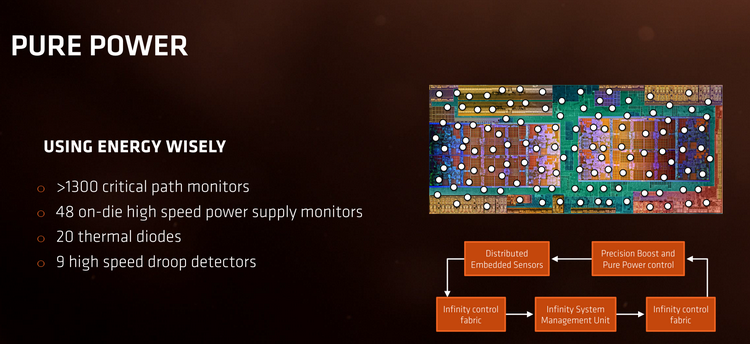
Подсистема питания Ryzen очень сложна
Сама AMD официально признала, что использование «сбалансированного» профиля может привести к падению производительности новых процессоров и рекомендовала использовать профиль с максимальными настройками в пользу скорости в ущерб экономичности. На днях компания представила то, чего ждали многие — профиль энергопотребления Windows, оптимизированный с учётом особенностей архитектуры Ryzen. Загрузить его можно использовав соответствующую ссылку. Сопутствующая информация содержится там же, в официальном блоге AMD.
Так следует настроить Windows после установки нового профиля
Ранее проблема заключалась в том, что система управлением питания, реализованная в Windows 10, чересчур агрессивно «парковала» ядра у Ryzen, не зная о существовании такого процессора и его особенностях. «Парковка» отключалась только для процессоров Intel, у которых есть поддержка технологии Speed Shift, минимизирующая латентность при переводе процессорных ядер из одного режима энергопотребления в другой. Теперь это исправлено, система знает об особенностях AMD Ryzen, и, как ожидалось, производительность систем на базе процессоров AMD Summit Ridge в ряде случаев заметно возросла. Серьёзное тестирование провели наши зарубежные коллеги с ресурса PC Perspective, и вот что им удалось обнаружить:
Прирост производительности в играх местами выглядит впечатляюще
Практически в каждой из протестированных игр мы видим некоторый прирост скорости, начинающийся со скромных 3,33 %, но в отдельных случаях, таких как Gears of War 4 или Crysis 3, достигающий внушительных 16,5 % и даже 21,56 %! А ведь речь всего лишь о том, чтобы поменять в настройках энергопотребления Windows 10 «сбалансированный» профиль на профиль, разработанный специально для Ryzen. На первый взгляд, разница заключается лишь в настройке «minimum processor state» (90 % против 100 %), но GUI не показывает всех особенностей нового профиля. На деле изменено большее количество параметров. За это можно покритиковать Microsoft, которая не раскрывает всех настроек ОС, которые порой могут оказывать существенное влияние на производительность; и с каждым годом ситуация отнюдь не улучшается.
Настройки AMD агрессивнее тех, которые должны обеспечивать максимальную производительность
Мы полагаем, что смысл в загрузке нового профиля энергопотребления есть для подавляющего большинства владельцев систем на базе AMD Ryzen, вне зависимости от модели и количества ядер. Разумеется, лишь в том случае, если владелец данного ПК вообще заботится о настройках энергопотребления, а не устанавливает режим высокой производительности, после чего забывает об этом разделе панели управления навсегда. Но даже тогда смысл может присутствовать, поскольку некоторые скрытые от глаз параметры у нового профиля установлены в более агрессивные значения, нежели в значении «High Performance». Мы рады видеть такое внимание AMD к нуждам игроков и владельцев ПК в целом и надеемся, что и в будущем компания продолжит придерживаться аналогичной политики.
Если вы заметили ошибку — выделите ее мышью и нажмите CTRL+ENTER.
Самые обсуждаемые публикации
Это не какая нибудь хитрая технология, встроенная в материнские платы, а обычная программа, которую можно установить на компьютер. Она существовала и раньше Enmotus FuzeDrive. Потом ребята из AMD договорились с разработчиками этой программы и выпустили свою версию под названием AMD StoreMI. Она позволяет использовать пустой SSD диск в качестве кэша для HDD диска, что делает работу последнего быстрее.
В последнее время ситуация вокруг этой технологии странная. В апреле 2021 года в AMD заявили, что поддерживать StoreMI в том виде, в каком она есть не будут и удалили ссылку на загрузку программы с сайта. Они собирались выпустить боле продвинутую технологию к концу года, а старую рекомендовали не использовать. Но уже в июле появилась AMD StoreMI 2.0, которая доступна только для материнских плат на чипсетах X570 и B550. Таким образом владельцы плат на чипсетах B450 и X470 получили эту технологию только на два года, а теперь остались не у дел. Конечно, всё ещё можно скачать и установить старую версию на сторонних ресурсах, но почему AMD не предоставила доступ к новой версии не понятно, так как никакие особенности новых чипсетов на работу программы не влияют. Вернее оно, кончено, понятно почему, но осознавать это неприятно.
Как включить AMD Ryzen Balanced Power Plan
Для установки и включения AMD Ryzen Balanced Power Plan следует загрузить и установить свежий пакет драйверов для ваших комплектующих AMD на материнской плате с официального сайта поддержки продуктов компании AMD, если вы ещё этого не сделали. В меню выберите пункт Chipsets
и далее — свой вариант чипсета.
Узнать какой именно чипсет у вас можно, например, с помощью утилиты AIDA64 в разделе Системная плата
:
В данном конкретном случае это чипсет B450
и он находится в группе сокетов
AMD Socket AM4
промежуточного меню. Увы, поиски нужного драйвера в этом интерфейсе не очень просты и очевидны.
Нажмите кнопку Отправить
(очевидно, имеется ввиду отправка информации для поиска). Появится результат:
Выберите драйвер нужной разрядности (32 или 64), скачайте пакет и установите его. После окончания установки загрузите Панель управления, далее запустите апплет Электропитание
.
В окне апплета можно выбрать любой из доступных планов питания для Вашей системы, в частности и планы электропитания от AMD.
Теперь вы знаете как включить ryzen balanced power plan.
Установка AMD StoreMI
Если вы счастливый обладатель материнской платы на базе чипсета X570 или B550, то можете скачать новую версию программы на официальном сайте. Все же остальные, и в том числе я, будем загружать последнюю доступную версию программы с Softpedia. Это версия 1.5.3. Это вполне серьезный ресурс и ему можно доверять.
После завершения загрузки установщика запустите его и выполните несколько шагов мастера установки. Там можно всё оставлять по умолчанию, поэтому я не буду подробно их описывать:
После завершения установки перезапустите компьютер:
Тестовая конфигурация
| Процессор |
| AMD Ryzen |
| Оперативная память |
| 2x 8 GB G.SKILL Flare X DDR4-3200 14-14-14-34 |
| Материнская плата |
| MSI X370 XPower Gaming Titanium AMD X370, BIOS v1.6 ( ASUS Maximus VIII Hero Intel Z170, BIOS 3401) |
| Видеокарта |
| NVIDIA GeForce GTX 1080 |
| Хранение данных |
| Crucial MX300 750 GB |
| Операционная система |
| Microsoft Windows 10 Home 64 Бит |
Как пользоваться AMD StoreMI
Подготовка быстрого диска
Программа может сделать кэш только на полностью пустом диске. Это сделано для того, чтобы вы случайно не стёрли важные данные. Найдите значок Этот компьютер, кликните по нему правой кнопкой мыши и выберите Управление. В открывшемся окне выберите Менеджер дисков:
Здесь найдите нужный диск и удалите с него всё разделы. Для этого кликайте по каждому разделу правой кнопкой и выбирайте Удалить том. Весь диск должен быть неразмеченным. На снимке экрана это диск 0.
2. Запуск
Запустите программу с ярлыка на рабочем столе или из главного меню:
Дождитесь окончания загрузки:
Начало работы
Для оптимизации работы HDD диска или более медленного SSD диска надо нажать кнопку Create Tier:
Подтвердите, что надо создать кэш для диска, с которого была загружена Windows:
Утилита предупредит, что эта технология была протестирована с множеством программ, но всё же она может вызвать проблемы, соглашайтесь:
Выбор дисков
Отметьте галочкой медленный диск (Slow) на котором сейчас работает Windows и быстрый диск (Fast) на котором будет размещаться кэш:
Затем нажмите кнопку Next. Затем подтвердите действие.
Трансформация
Дождитесь завершения трансформации:
Затем перезагрузите компьютер:
6. Готово
После перезагрузки утилита покажет, что кэш настроен и вы можете изменить его параметры:
Теперь диски связанны и в Менеджере дисков они отображаются как один большой диск.
Кэш в оперативной памяти
Кроме того, вы можете создать кэш диска в оперативной памяти. Для этого кликните по пункту Create RAM Cache:
Затем выберите нужный размер кэша и нажмите Create. Чтобы удалить кэш из памяти выберите RAM Cache Off соответственно.
Удаление дополнительного раздела
Удалить программу намного сложнее чем установить. Поскольку виртуальный объедененный диск теперь загрузочный, вы не можете просто его убрать. Для этого надо сделать его не загрузочным, а для этого понадобится ещё одна установленная система Windows. Сначала надо исключить быстрый диск из кэша, для этого откройте программу выберите Change Tier Settings, а затем выберите ваш диск и опцию Move all data to slow drive.
После этого виртуальный диск будет состоять только из одного диска, а второй будет свободен и на этот второй вы можете клонировать текущую систему Windows или установить новую. Далее надо загрузится в эту систему, запустить там AMD StoreMI, выбрать Change Tier Settings, выбрать ваш виртуальный диск и опцию Delete Tier:
После этого виртуальный диск будет удалён и вы сможете пользоваться своей системой как раньше.
Что нужно для перехода на Ryzen
Новые чипы AMD являются полностью новой платформой, которая использует разъем AM4. Они также перешли от популярной сегодня оперативной памяти стандарта DDR3 на память DDR4. Она быстрее и потребляет меньше энергии. Дополнительно Ryzen поддерживает память бизнес-класса со встроенной проверкой ошибок ECC.
Ryzen 1700 vs i7 7700K REVIEW
Процессоры Ryzen поддерживают только Windows 10. Установить Windows 7 или 8 можно, но искать драйверы для них придется самостоятельно. Спросить помощи у Microsoft или AMD не получится, и официальных драйверов от них тоже не будет.
Выводы
Теперь вы знаете как пользоваться AMD StoreMI. Хочу отметить, что чисто удалить эту программу у меня так и не удалось. Диск на котором был создан кэш остался не читаемым после удаления и все данные, которые там были были утеряны. Возможно это баг, а возможно так и было задумано, поэтому имейте в виду, что если вы устанавливаете эту программу, то удалить её будет сложно. Если у вас уже есть установленный параллельно на том же диске дистрибутив Linux, то он тоже будет полностью удален.
Если вы нашли ошибку, пожалуйста, выделите фрагмент текста и нажмите Ctrl+Enter.
Похожие записи:
No related photos.
Оцените статью:
(2 оценок, среднее: 3,00 из 5)
Tweet Pin It
Об авторе
admin
Администратор te4h.ru, интересуюсь новыми технологиями, криптовалютой, искусственным интеллектом, свободным программным обеспечением и Linux.
4 комментария
- Е 26.09.2020 Ответить
Они открыли доступ ко всем платам на их чипсете бесплатно B450 Тоже - seamen 03.11.2020 Ответить
+
- Илья 01.12.2020 Ответить
Я где то видел статью, что для удаления storemi надо перенести с помощью стороннего менеджера разделов типа Парагона(разделы видимые из под винды) на другой диск изагрузившись с них тогда уж удалять сабж. а вот то чего я боялся, что будет если SSD сдохнет — похоже ничего, скорость просто станет как если его нет.
- Илья 01.12.2020 Ответить
Кстати, никто не посоветует как сделать финт доступный всем без StoreMI но похоже невозможный если поставил его — проверку антивирусом загруженным с флешки? там похоже нет драйверов чтобы прочитать эти разделы. для винды что интересно они есть, envirtahci называется. их даже загрузчику дисрибутива можно подсунуть. но вот с антивирусами облом, кроме загрузочной проверки стандартным виндовым.. но я бы предпочел консилиум
( 1 оценка, среднее 4 из 5 )

